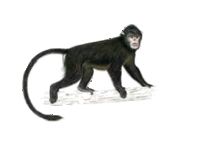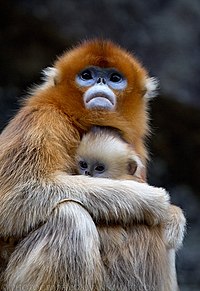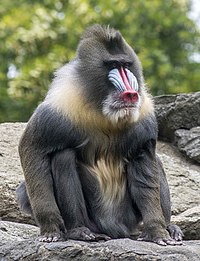
Resequencing and comparison of whole mitochondrial genome to gain insight into the evolutionary status of the Shennongjia golden snub‐nosed monkey (SNJ R. roxellana)
Sign Up to like & getrecommendations! Published in 2017 at "Ecology and Evolution"
DOI: 10.1002/ece3.3011
Abstract: Abstract Shennongjia Rhinopithecus roxellana (SNJ R. roxellana) is the smallest geographical population of R. roxellana. The phylogenetic relationships among its genera and species and the biogeographic processes leading to their current distribution are largely unclear.… read more here.
Keywords: mitochondrial genome; snub nosed; roxellana; snj roxellana ... See more keywords

Identifying refugia and corridors under climate change conditions for the Sichuan snub‐nosed monkey (Rhinopithecus roxellana) in Hubei Province, China
Sign Up to like & getrecommendations! Published in 2019 at "Ecology and Evolution"
DOI: 10.1002/ece3.4815
Abstract: Abstract Using a case study of an isolated management unit of Sichuan snub‐nosed monkey (Rhinopithecus roxellana), we assess the extent that climate change will impact the species’ habitat distribution in the current period and projected… read more here.
Keywords: sichuan snub; nosed monkey; change; climate change ... See more keywords

Habitat evaluation and conservation framework of the newly discovered and critically endangered black snub-nosed monkey
Sign Up to like & getrecommendations! Published in 2017 at "Biological Conservation"
DOI: 10.1016/j.biocon.2017.02.029
Abstract: Abstract The black snub-nosed monkey (Rhinopithecus strykeri) is an IUCN-Critically Endangered primate, recently discovered on the northern Sino-Myanmar border. In order to identify the most urgent gaps in the conservation of the black snub-nosed monkey,… read more here.
Keywords: habitat; black snub; nosed monkey; conservation ... See more keywords

Habitat estimates reveal that there are fewer than 400 Guizhou snub-nosed monkeys, Rhinopithecus brelichi, remaining in the wild
Sign Up to like & getrecommendations! Published in 2020 at "Global Ecology and Conservation"
DOI: 10.1016/j.gecco.2020.e01181
Abstract: Abstract Population size is a critical indicator used to assess the demographic profile and conservation status of animal species living in disturbed habitats. Using GIS technology, we calculated the remaining habitat area and estimated the… read more here.
Keywords: habitat; rhinopithecus brelichi; area; guizhou snub ... See more keywords

Identification of Atypical Enteropathogenic Escherichia coli O98 from Golden Snub-Nosed Monkeys with Diarrhea in China
Sign Up to like & getrecommendations! Published in 2017 at "Frontiers in Veterinary Science"
DOI: 10.3389/fvets.2017.00217
Abstract: Fecal samples (n = 76) were collected from 38 snub-nosed monkeys (Rhinopithecus roxellana) in Shennongjia National Nature Reserve (China) and examined for the presence of enteropathogenic Escherichia coli (EPEC). The 56 samples originated from 30 free-ranging monkeys… read more here.
Keywords: snub nosed; escherichia coli; enteropathogenic escherichia; nosed monkeys ... See more keywords

Epidemiological Survey and Risk Factor Analysis of 14 Potential Pathogens in Golden Snub-Nosed Monkeys at Shennongjia National Nature Reserve, China
Sign Up to like & getrecommendations! Published in 2023 at "Pathogens"
DOI: 10.3390/pathogens12030483
Abstract: Golden snub-nosed monkeys (Rhinopithecus roxellanae) belong to Class A, the highest level of endangered primate species. Exploring the infection status of potential pathogens in golden snub-nosed monkeys is important for controlling associated diseases and protecting… read more here.
Keywords: nosed monkeys; reserve; potential pathogens; golden snub ... See more keywords

Assessing the utility of urinary and fecal cortisol as an indicator of stress in golden snub-nosed monkeys (Rhinopithecus roxellana)
Sign Up to like & getrecommendations! Published in 2017 at "PeerJ"
DOI: 10.7717/peerj.3648
Abstract: Cortisol concentration (CC) is often used as a stress indicator in animals, as high CC is associated with elevated stress levels. During field research, non-invasive methods of measuring CC, such as collection of urine and… read more here.
Keywords: urine feces; nosed monkeys; golden snub; stress ... See more keywords